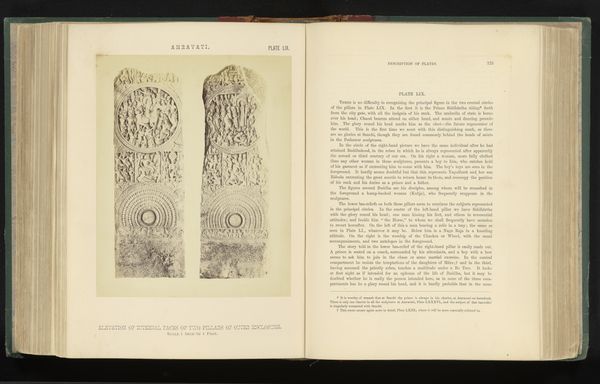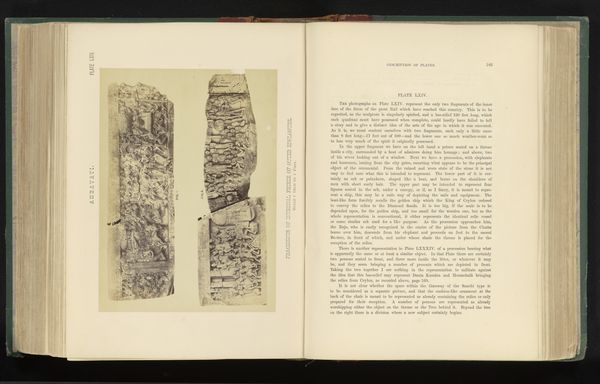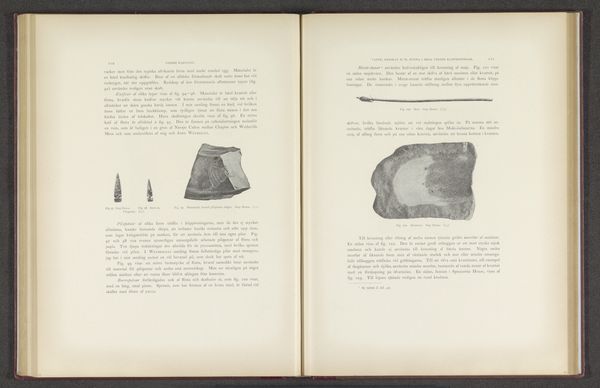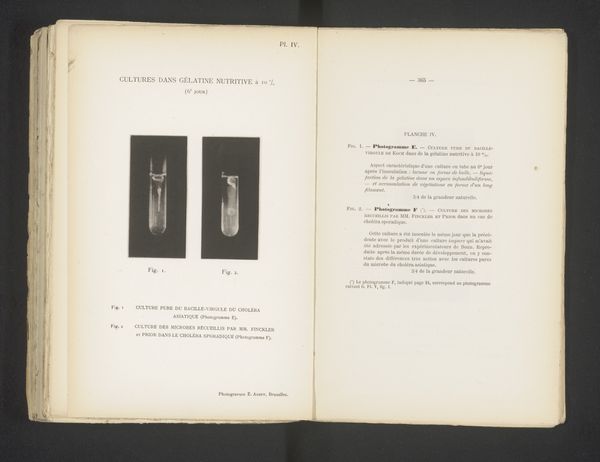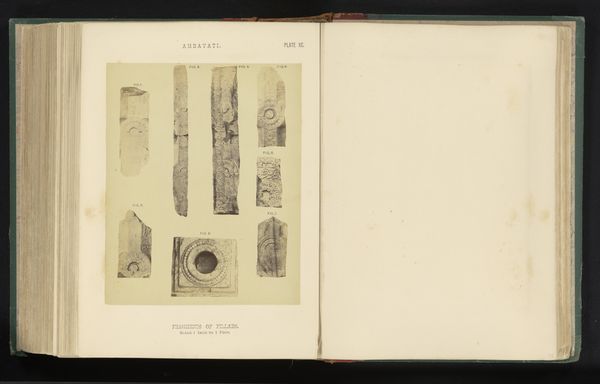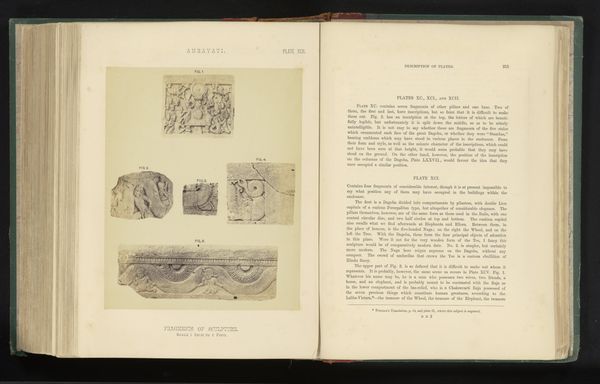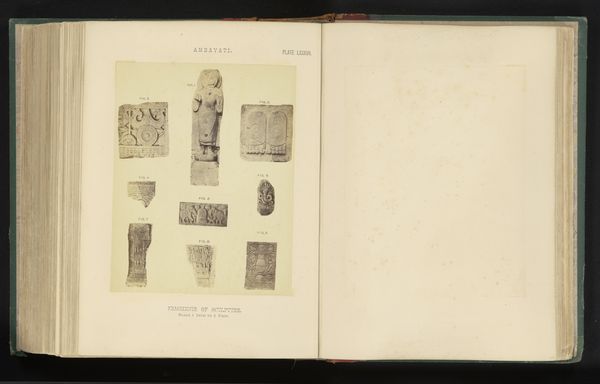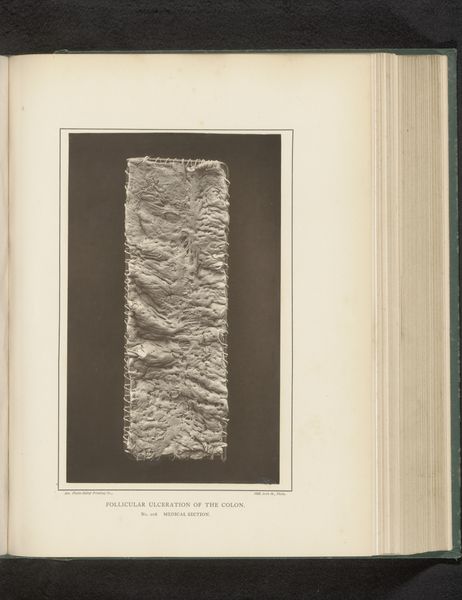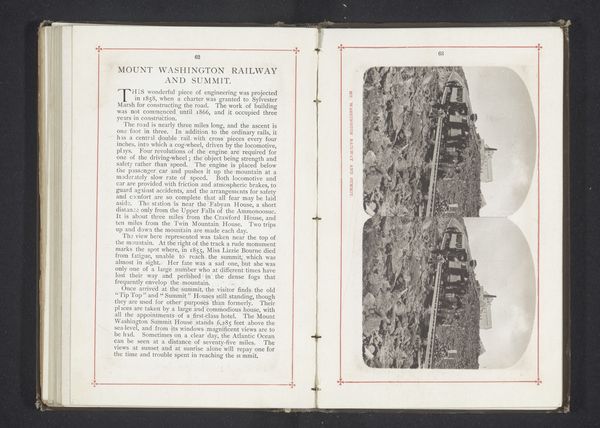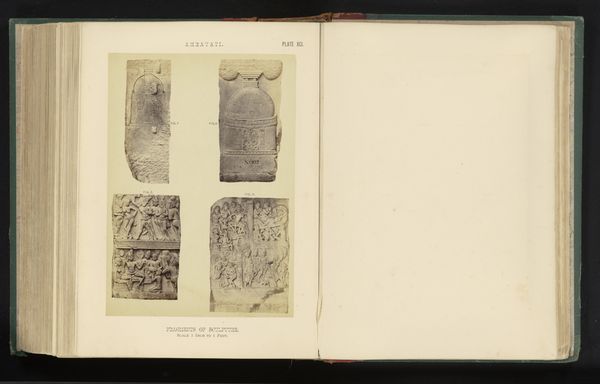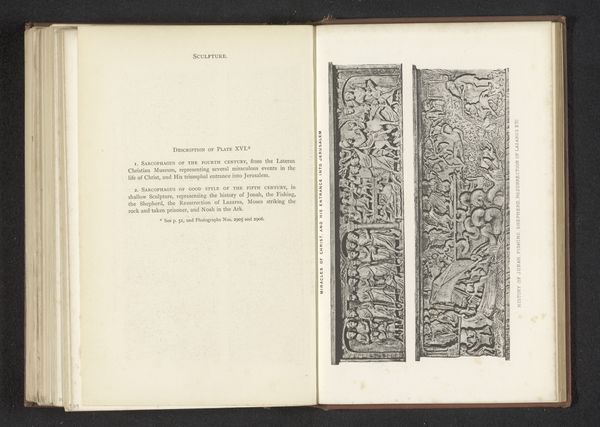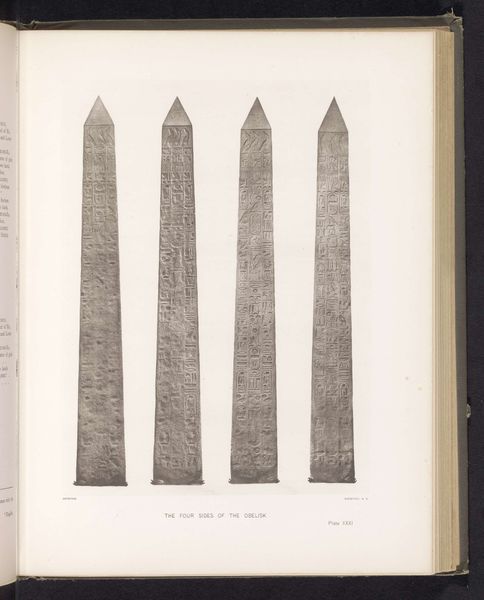
print, relief, paper, photography
# print
#
asian-art
#
relief
#
paper
#
photography
#
ancient-mediterranean
#
column
Dimensions: height 240 mm, width 195 mm
Copyright: Rijks Museum: Open Domain
Curator: This photogravure presents what are referred to as, "Four Columns with Reliefs," dating back to before 1868, showcased in a publication by William H. Griggs. My first thought is that the ancient artisans, in marking each column so exquisitely, saw themselves inscribing knowledge not merely onto stone, but across time. Editor: That's a lovely image, but what speaks to me immediately is the damaged state. Look at the column furthest to the left, or even the chipped head of the second one—ruin is present within representation, a sign of what decays or has been violently pulled apart in the name of power. Where might these columns have been situated and by what community of people were they used and venerated? Curator: Ah, yes, I can understand what you mean about the ruin that we can witness here. They feel like survivors bearing scars. From an art perspective, it also allows our imagination some room to take hold of it. What do you imagine they would've supported? A palace? A temple? Editor: What if we consider how sites like these—in all their fragility—were spaces of both material value and symbolic currency under imperial-colonial occupation? Curator: Hmm. The symmetry within each unique shape is, to me, the most impressive visual fact in this work. Despite all the chaos in our own existence, it provides us with an inner sense of completion and organization. Perhaps a mirror to how our brains desire to exist, if that makes any sense. Editor: It makes sense, but it's incomplete without considering this particular ruin's location in relation to global circuits of value. This symmetry might reveal the ideological order that art historians and curators often seek in classical aesthetics while erasing the realities of plunder. The image and description together strike me as part of a colonial project aimed to codify and control. Curator: And there is the crucial collision point between us as thinkers—colonialism versus craft, both true. Thinking of my initial impression now, what I interpreted as a form of gentle knowledge might also be the remains of something deliberately crushed. Editor: Precisely! Seeing isn't believing, it's understanding how what you're seeing comes to mean in a historical moment, and to whom. And perhaps we can encourage our listeners to continue with their own discoveries, too.
Comments
No comments
Be the first to comment and join the conversation on the ultimate creative platform.
